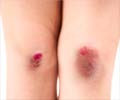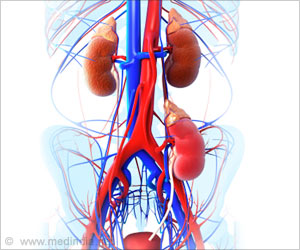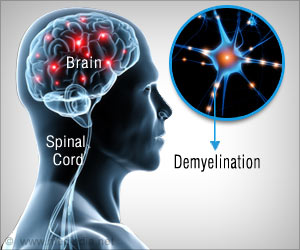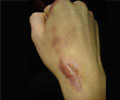Biomedical engineers develop miniature self-sealing wound model for studying clotting of wounds.

"Current methods to study blood clotting require isolation of each of these components, which prevents us from seeing the big picture of what's going with the patient's blood clotting system," says Lam, assistant professor in the Department of Pediatrics at Emory University School of Medicine and in the Wallace H. Coulter Department of Biomedical Engineering at Georgia Tech and Emory University.
The model is the result of a collaboration between Lam's group at Emory and Georgia Tech and Shawn Jobe, MD, PhD at the Blood Center of Wisconsin. The co-first authors of the paper are research specialist Yumiko Sakurai, instructor Elaissa Hardy, PhD and senior engineer Byungwook Ahn, PhD, now at LG Electronics.
Previous models might only simulate clot formation, for example. The model does not include smooth muscle and does not reproduce aspects of larger blood vessels.
The system consists of a layer of human endothelial cells, which line blood vessels, cultured on top of a pneumatic valve. The "wound" is created by activating a pneumatic valve, opening what Lam calls a trap door. Donated human blood flows through the wound, which is about 130 micrometers across.
In the accompanying movie, most of the blood cells are seen as grey: erythrocytes are round grey donuts, while platelets are smaller specks. The red-stained cells are actually white blood cells. A green extracellular "glue" can be seen at the top of the wound; this is fibrin, which holds the clot together.
Advertisement
The system responds to manipulation by drugs and other alterations that reproduce clotting disorders. Blood from hemophilia A patients form abnormal clots and shows extended bleeding time in the model.
Advertisement
Source-Eurekalert










